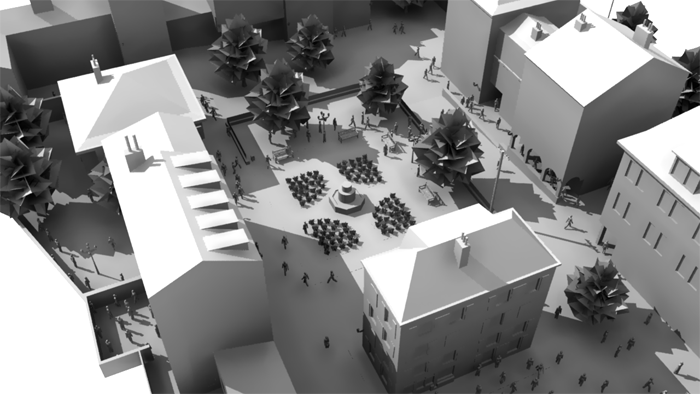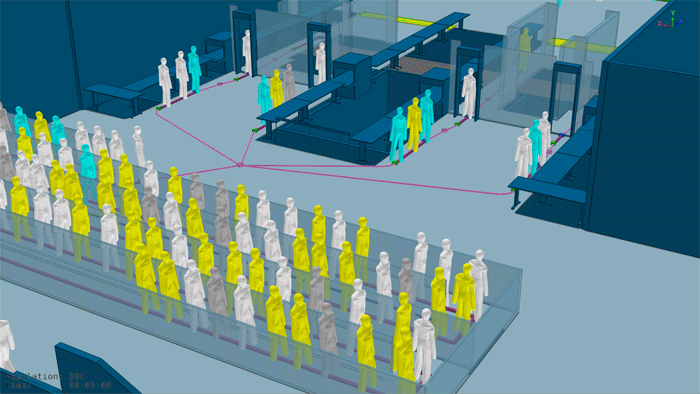IFC import /Alembic export capabilities and built in modelling tools provide standalone functionality
Oasys has added a host of new modelling, visualisation and analysis features to its pedestrian simulation and crowd analysis tools for building and district planning. This includes MassMotion and a sister product Flow, which is designed for less complex ingress/egress and emergency evacuation planning.
MassMotion V8.0 features a new interface design and built-in polygon modelling tools, which eliminates the need to use SoftImage, the third party application that characterised earlier releases. With these new tools, 3D environments can be created from scratch or imported using the open IFC standard from tools such as AutoCAD, MicroStation, Sketch-Up, Rhino & Revit. The geometry is automatically mapped, including floors, barriers, links and portals.

The visualisation tools within MassMotion and Flow have been upgraded, and there are also now Alembic export capabilities to enhance rendering in tool such as 3ds Max and Maya.
With a wider choice of built-in graphing, mapping and filtering tools, this system is said to be highly scalable for large crowds and for simulation scenarios that can cover multiple days. The 3D capabilities of MassMotion enable users to develop custom analysis based on spatial, temporal, operational, and personal characteristics of people and their environment. According to the developers it becomes even easier to ask ‘What if?’ by running and viewing a single analysis on multiple result sets at the same time.
“Crowd simulation is now in the mainstream, and has an important part to play in achieving great design as well as emergency planning. A key achievement of the development team has been to make it fit in so seamlessly with BIM workflows.” says Oasys Product director Erin Morrow. “With MassMotion & Flow, we make sophisticated analysis fast, easy and affordable. Crowd simulation becomes an integral facet of every project, returning investment quickly and generating visual outputs that streamline communications with stakeholders.”
MassMotion is designed to solve complex problems about how a building can actually perform for its occupants delivering results in a highly visual manner. According to the developers, it is non-deterministic, reflecting real-life human behaviour, so the virtual agents in a MassMotion model reveal real pedestrian flow issues and opportunities.


If you enjoyed this article, subscribe to AEC Magazine for FREE






